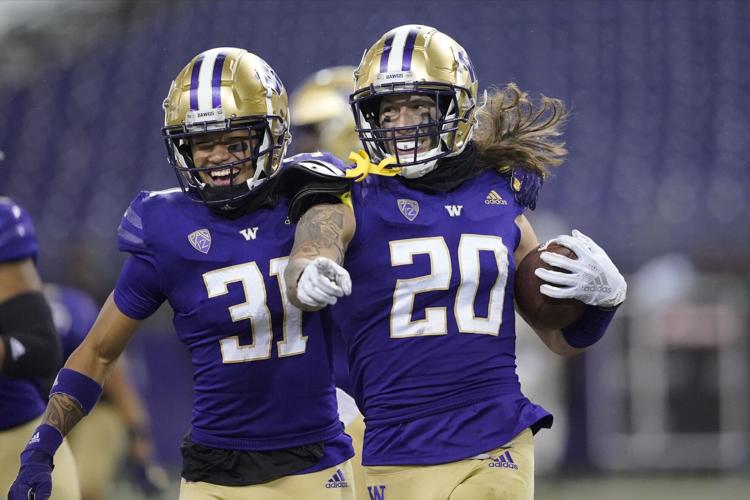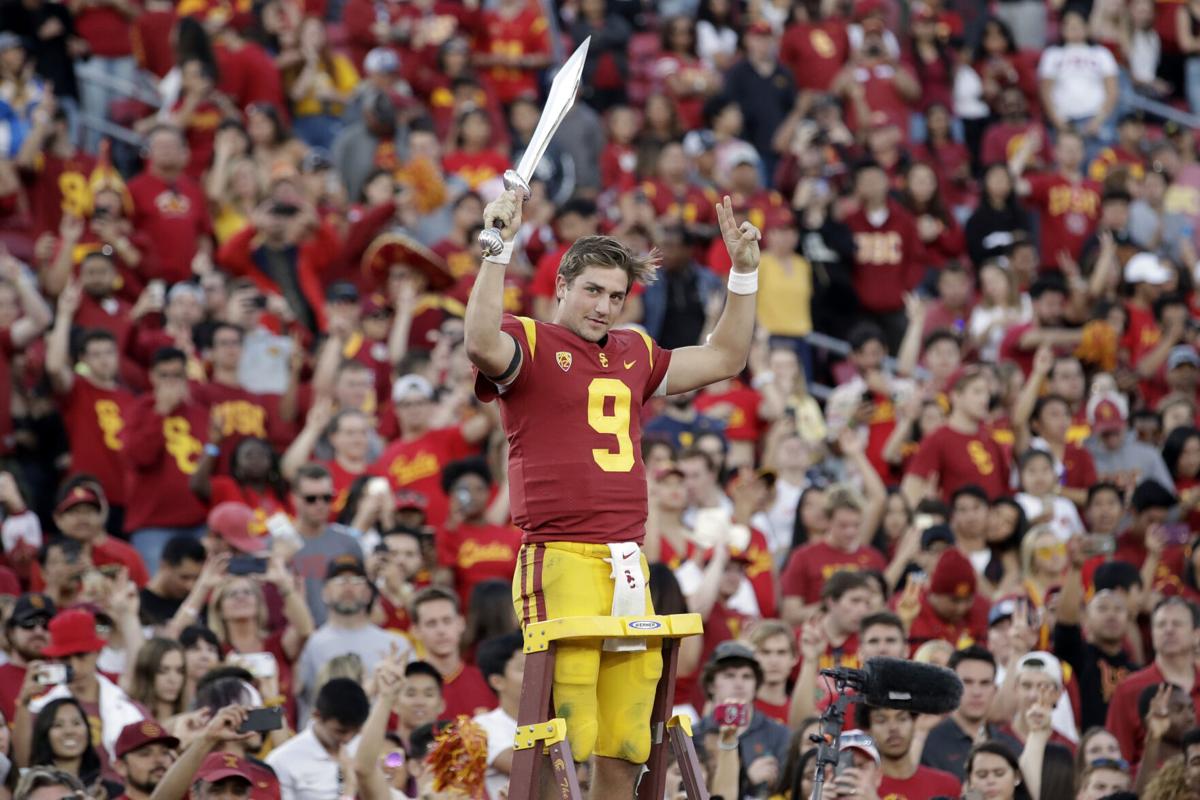George Kliavkoff’s anticipated tour of the Pac-12 campuses began late last month, following the conference’s midsummer media showcase. Given that the event took place at the W Hollywood Hotel, it made perfect logistical sense to start the tour at USC.
It also made political sense, financial sense, symbolic sense and existential sense.
As realignment roils college football and partnerships dissolve, the new commissioner’s mission is clear: Keep the Pac-12 intact and potential marauders at bay.
To secure enduring West Coast harmony, Kliavkoff must keep the most valuable, most desirable football schools happy. The list starts exactly where Kliavkoff’s tour began. It starts with USC:
The Trojans have won more national championships during the poll era (seven) than all other Pac-12 schools combined.
They are the dominant program in the largest college football media market in the country. (New York City doesn’t have a major college team.)
Their biennial home game against Notre Dame is the most valuable regular-season property on the Pac-12’s inventory shelf, walloping the Oregon-Washington duel, for example, in the ratings game.
In the expansion equation, the Trojans are to the Pac-12 what Ohio State is to the Big Ten and what Texas is — err, was — to the Big 12. They are the keystone in the Pac-12 arch.
Remove USC, and the entire structure collapses.
What was said during Kliavkoff’s two-day tour of campus? How committed are the Trojans to the Pac-12? How willingly would they listen to a pitch from, say, the Big Ten?
USC athletic director Mike Bohn declined to comment on his time with Kliavkoff but offered the following remark on Twitter after the commissioner’s visit: “We look forward to a great partnership with him for the long-term success of this conference.”
The sentiment echoed Bohn’s comments earlier this summer during a wide-ranging interview with the Hotline.
Asked about USC’s commitment to the Pac-12, Bohn said he was excited “to partner with George and help execute a vision for the future of the conference.”
“I don’t think anyone is in position to make declarative statements about the future,’’ he added. “But I know what the Pac-12 can be when USC is at its best. We can take advantage of this opportunity to reset.”

Washington may not carry the weight out West of USC's blue blood program, but the Huskies are still one of the Pac-12's most important pieces.
A few weeks later, the ground liquefied under the Big 12, the SEC grew immeasurably stronger and nerves frayed from coast to coast.
Is the SEC finished? Will the Big Ten respond, perhaps with a raid of the top football programs on the West Coast? Will the ACC attempt a daring cross-country poach?
In other words: Is the Pac-12’s foundation solid or shaky? The California schools, Oregon and Washington would bring massive media rights value to any predatory conference.
Even the university presidents are monitoring the situation.
“One of the things I’ve watched George do is, he talks to a lot of people — not just people outside the conference but inside,’’ Washington State president Kirk Schulz told the Hotline last week.
“He understood our dynamics quickly. We have some marquee brands, like USC, Washington and Oregon. I don’t want to offend anyone at Washington State or anywhere else, but I think that’s how a lot of people view the Pac-12.”
USC stands atop the list of “marquee brands” and, thus, resides at the center of the conference’s future.
If the Trojans are content and committed, there is little chance of the Pac-12 rupturing.
Oregon and Washington would have no motivation to untether from the conference’s California foundation. Nor would they be valuable enough to the Big Ten or ACC as standalone football properties tucked in the Northwest corner. A substantial portion of their intrinsic value comes from an association with the teams in the Los Angeles market.
Meanwhile, USC’s commitment would lock in UCLA and, by extension, the Bay Area schools.
(Kliavkoff did not visit Westwood last month, in tandem with his tour of USC, because of limited meet-and-greet opportunities related to UCLA’s academic calendar.)
But if the Trojans acquire a wandering eye, a fault line could appear through the conference that pushes Washington State, Oregon State, Utah, Colorado, Arizona and Arizona State to the brink — and puts Kliavkoff’s job in jeopardy.
He recognizes how the pieces fit.
“George makes it a priority to constantly communicate with the leadership at those schools,” Schulz said of USC, Oregon and Washington.
In a practical sense, the situation requires a deft personal touch and nuanced strategy. It’s not about blatant favoritism of one school or overt disregard of another. It’s about treating every football program fairly but, perhaps, not always equally.
“The athletic directors all individually signed off on walking away from parity and focusing on invitations to the playoffs and championships,” he told the New York Times, “even understanding that their individual schools might be disfavored in that in any particular year or any particular week, but understanding that it’s important for the conference to be back in the playoff and winning championships.”
Mostly, the Pac-12’s top football brands must know they will be respected as such, consulted frequently and valued eternally. Kliavkoff cannot provide the kindling to respond if other leagues reach out; he must douse them with reasons to ignore the calls.
In that regard, he would be wise to mirror the approach taken by Jim Delany. The legendary former Big Ten commissioner gave each school the opportunity to voice its opinion on important football matters. Then he’d call Ohio State and Michigan and ask how they wanted to proceed.
This is no time for the Pac-12 to worry about hurt feelings.
The future’s at stake, the end-game is unclear and, as realignment rocks the landscape, some schools carry more weight than others.
One, in particular, tips the scales.






